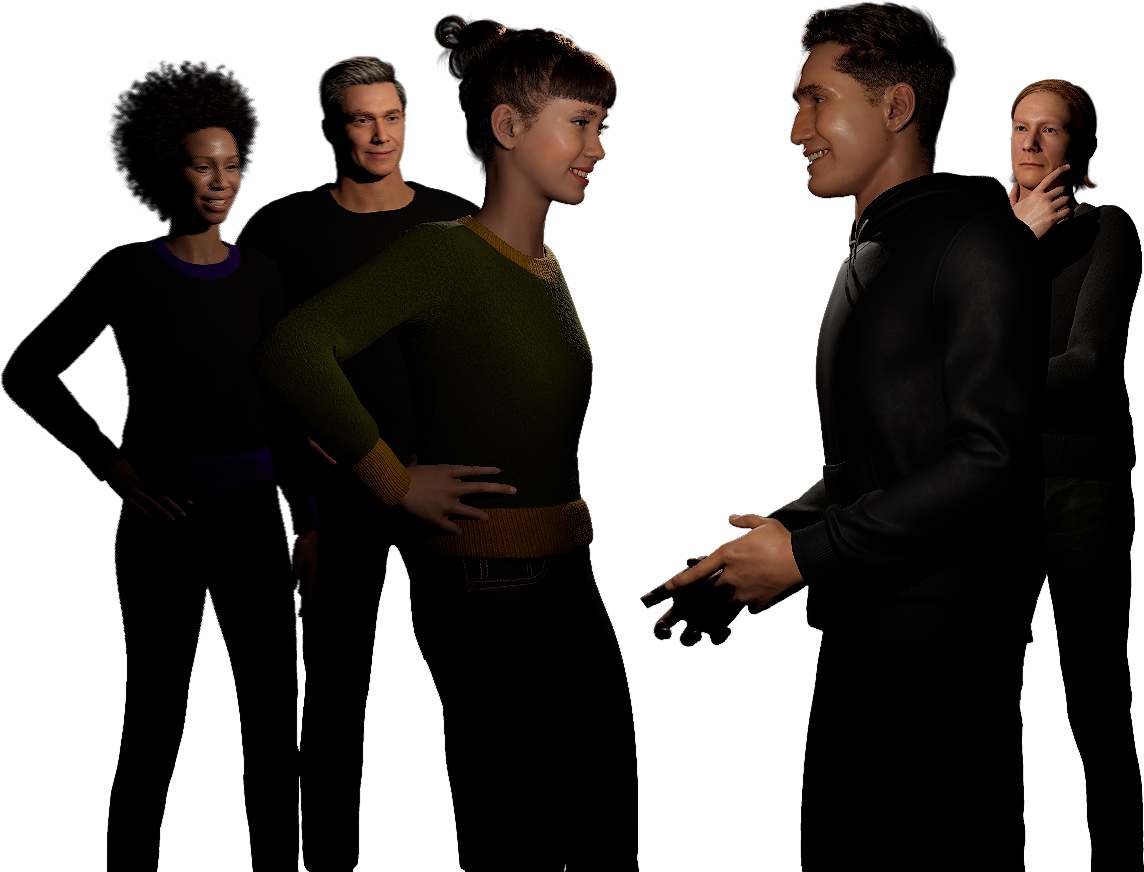
Story
Chicago River is a fictional story that occurs in a fictitous neighborhood on the Chicago River situated between the actual Loop and River North.
An intern gets a spy-tech job creating AI-based avatars at a quantum computer research center in Chicago. He is torn between the exploits of AI and the opposing values of a local barrista. A solitary riverman befriends the intern, champions the simplicity of his non-conformist lifestyle, and questions the intern's new job.
Production
This is an independent production, completed by one person, Robert Sfarzo, who wrote the orginial screenplay and then made an animated film to visualize it. The animation was assembled from third-party assets for sets, props, as well as character faces, bodies, and animation snippets. The 30 minute film was completed in the summer of 2025, and is a submission to several 2026 film festivals. Public screening will occur after the festival season.
The screenplay was written in Minneapolis, the Spring of 2001, to be filmed someday in a city like LA, New York, or Chicago. Why Chicago? LA has consistently sunny weather, but the skyscrapers are sparse and unimpressive. New York City is so dense that city shots would be either long horizon ones or downtown canyons. Chicago is laid out like a jewel box, has a renowned history for architecture, and there is space around all four sides of the skyscrapers that yields beautiful depth and dimension.
This production started in July 2024 as a live-action film. Curiousity about virtual sets and greenscreening actors led to Blender, a fine application but extremely slow at rendering. While predominently video game authoring software, Epic Games Unreal Engine had excellent image quality and fast rendering times. There is a vast selection of 3rd party assets for everything from virtual sets and props to motion capture snippets. And the Metahuman characters at that point were showing great promise. Thus, the entire production became an animated virtual production. Despite the challenges of working with bleeding-edge beta technology, Unreal Engine's animation components improved as the production proceeded, culminating in the nexus of its version 5.6 in June 2025 and the completetion of this film in September 2025.
The early stages of this production did not use AI but rather one human actor, the screenwriter, performing facial motion captures and voices. AI was chosen for quickly syncing text, reducing retakes, creating dialogue voices and mouth movement. The orginal screenplay dialogue text was input to Amazon Polly which uses AI to create the spoken character voices. The resulting Amazon Polly audio files were processed by Unreal Engine which uses AI to generate corresponding mouth movements. Human effort is the total contributor to all other aspects: dialog, screenplay, images, graphics, 3D models, motion capture, video, musical score, film editing, etc.
Credits
